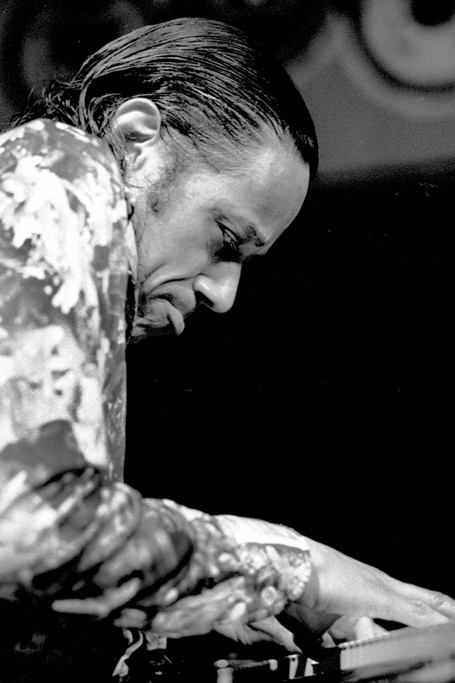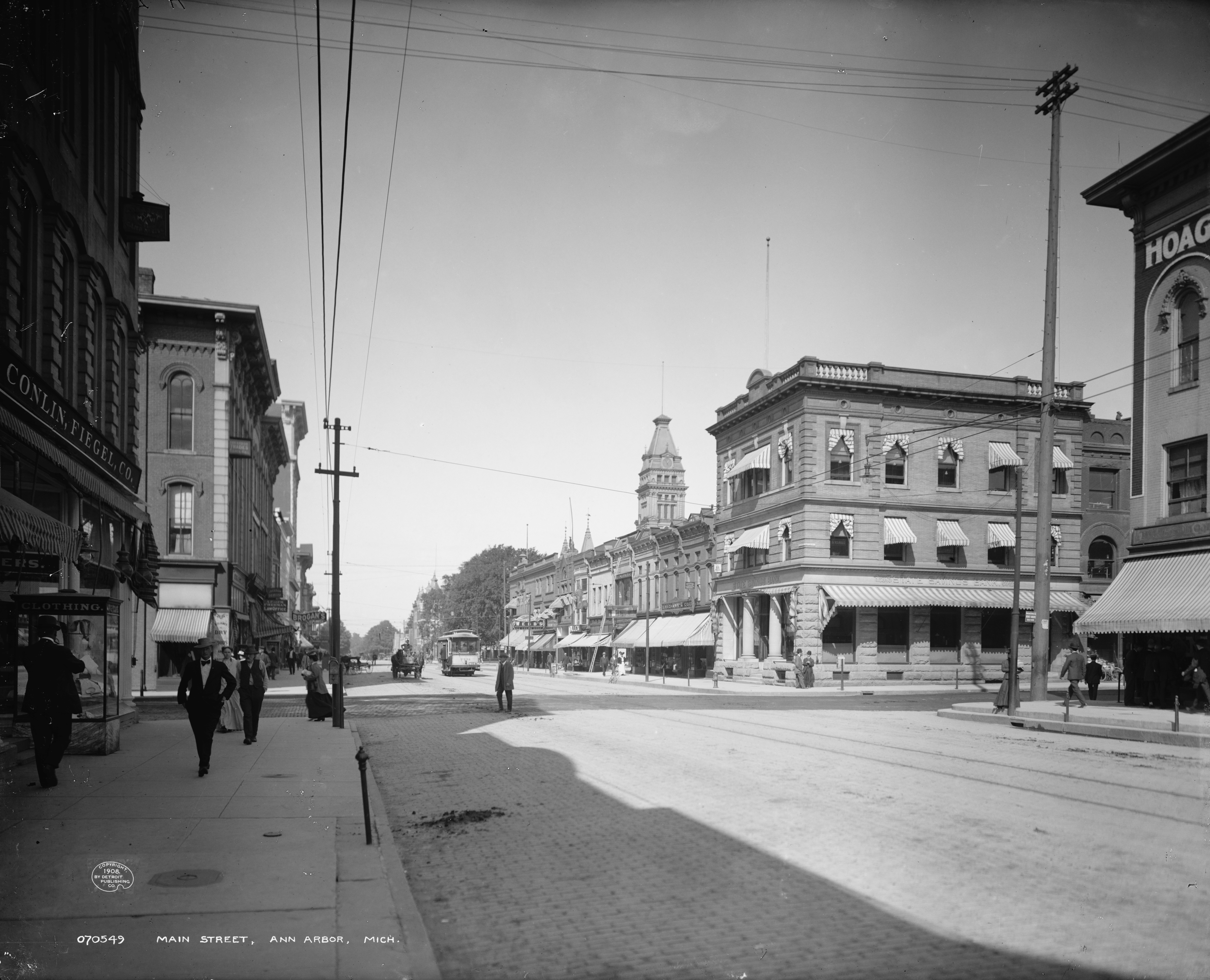|
Miles Davis Quintet
The Miles Davis Quintet was an American jazz band from 1955 to early 1969 led by Miles Davis. The quintet underwent frequent personnel changes toward its metamorphosis into a different ensemble in 1969. Most references pertain to two distinct and relatively stable bands: the First Great Quintet from 1955 to 1959, and the Second Great Quintet from late 1964 to early 1969, Davis being the only constant throughout. First Great Quintet/Sextet (1955–59) In the summer of 1955, after Davis performed at the Newport Jazz Festival, he was approached by Columbia Records executive George Avakian, who offered him a contract if he could form a regular band. Davis assembled his first regular quintet to meet a commitment at the Café Bohemia in July with Sonny Rollins on tenor saxophone, Red Garland on piano, Paul Chambers on bass, and Philly Joe Jones on drums. By the autumn, Rollins had left to deal with his heroin addiction, and later in the year joined the hard bop quintet led by Cliffor ... [...More Info...] [...Related Items...] OR: [Wikipedia] [Google] [Baidu] |
Miles Davis (Antibes Juan-les-Pins 1963)
Miles Dewey Davis III (May 26, 1926September 28, 1991) was an American trumpeter, bandleader, and composer. He is among the most influential and acclaimed figures in the history of jazz and 20th-century music. Davis adopted a variety of musical directions in a five-decade career that kept him at the forefront of many major stylistic developments in jazz. Born in Alton, Illinois, and raised in East St. Louis, Davis left to study at Juilliard in New York City, before dropping out and making his professional debut as a member of saxophonist Charlie Parker's bebop quintet from 1944 to 1948. Shortly after, he recorded the ''Birth of the Cool'' sessions for Capitol Records, which were instrumental to the development of cool jazz. In the early 1950s, Davis recorded some of the earliest hard bop music while on Prestige Records but did so haphazardly due to a heroin addiction. After a widely acclaimed comeback performance at the Newport Jazz Festival, he signed a long-term contract with ... [...More Info...] [...Related Items...] OR: [Wikipedia] [Google] [Baidu] |
Hard Bop
Hard bop is a subgenre of jazz that is an extension of bebop (or "bop") music. Journalists and record companies began using the term in the mid-1950s to describe a new current within jazz that incorporated influences from rhythm and blues, gospel music, and blues, especially in saxophone and piano playing. David H. Rosenthal contends in his book ''Hard Bop'' that the genre is, to a large degree, the natural creation of a generation of African-American musicians who grew up at a time when bop and rhythm and blues were the dominant forms of black American music. Prominent hard bop musicians included Horace Silver, Clifford Brown, Charles Mingus, Art Blakey, Cannonball Adderley, Miles Davis, John Coltrane, Hank Mobley, Thelonious Monk and Lee Morgan. Musical style Hard bop is sometimes referred to as "funky hard bop". The "funky" label refers to the rollicking, rhythmic feeling associated with the style. The descriptor is also used to describe soul jazz, which is commonly a ... [...More Info...] [...Related Items...] OR: [Wikipedia] [Google] [Baidu] |
The Legendary Prestige Quintet Sessions
''The Legendary Prestige Quintet Sessions'' is a four compact disc box set of recordings by the Miles Davis Quintet released in 2006 by the Concord Music Group. It collates on three discs the entire set of recordings that made up the Prestige Records albums released from 1956 through 1961 — ''Miles'', '' Cookin''', '' Relaxin''', '' Workin''', and '' Steamin'''. The track " 'Round Midnight" was released on the album ''Miles Davis and the Modern Jazz Giants''. The fourth disc contains live material from a television broadcast and in jazz club settings. It peaked at #15 on the Billboard jazz album chart, and was reissued on December 2, 2016, in a smaller compact disc brick packaging. In 2019 Craft Recordings, an imprint of the Concord group of labels, released a 32-track version without the fourth disc of live recordings subsequent to the main body of studio recordings in digital hi-res format. It is also available in a set of six vinyl LPs from Craft Recordings in the original 4 ... [...More Info...] [...Related Items...] OR: [Wikipedia] [Google] [Baidu] |
Prestige Records
Prestige Records is a jazz record company and label founded in 1949 by Bob Weinstock in New York City which issued recordings in the mainstream, bop, and cool jazz idioms. The company recorded hundreds of albums by many of the leading jazz musicians of the day, sometimes issuing them on subsidiary labels. In 1971, the company was sold to Fantasy, which was later absorbed by Concord. History The Prestige office was located at 446 West 50th Street, New York City. Its catalogue included Gene Ammons, John Coltrane, Miles Davis, Stan Getz, Wardell Gray, Thelonious Monk, and Sonny Rollins. Audio engineer Rudy Van Gelder was the recording engineer of many Prestige albums in the 1950s and early-to-mid-1960s. Prestige created new labels in 1960: Swingville, Moodsville, covering jazz, Bluesville featuring blues revival artists, Lively Arts featuring spoken word recordings and Prestige International, Prestige Folklore, Irish and Near East with folk and world music. By the later 1950s, We ... [...More Info...] [...Related Items...] OR: [Wikipedia] [Google] [Baidu] |
Recording Session
The term studio recording means any recording made in a studio, as opposed to a live recording, which is usually made in a concert venue or a theatre, with an audience attending the performance. Studio cast recordings In the case of Broadway musicals, the term studio cast recording applies to a recording of the show which does not feature the cast of either a stage production or film version of the show. The practice has existed since before the advent of Broadway cast albums in 1943. That year the songs from Rodgers and Hammerstein's ''Oklahoma!'', performed by the show's cast, were released on a multi-record 78-RPM album by American Decca. (London original cast albums have existed since the early days of recording, however, and there are recordings in existence of excerpts from such shows as ''The Desert Song'', '' Sunny'', and ''Show Boat'', all performed by their original London stage casts.) History Before 1943, musicals were recorded in the U.S. with what might be termed s ... [...More Info...] [...Related Items...] OR: [Wikipedia] [Google] [Baidu] |
Milestones (Miles Davis Album)
''Milestones'' is a studio album by American jazz trumpeter, bandleader, and composer Miles Davis. It was recorded with his "first great quintet" augmented as a sextet and released in 1958 by Columbia Records. Composition Tenor saxophonist John Coltrane's return to Davis' group in 1958 coincided with the "modal phase" albums: ''Milestones'' and ''Kind of Blue'' (1959) are both considered essential examples of 1950s modern jazz. Davis at this point was experimenting with modes – scale patterns other than major and minor. Davis plays both trumpet and piano on "Sid's Ahead", a blues which is reminiscent of "Walkin'". He plays trumpet in the ensemble passages and solos on trumpet but moves to the piano to accompany the saxophonists in Garland's absence. "Billy Boy" is a solo feature for Garland and the rhythm section. Critical reception In a five-star review, AllMusic's Thom Jurek called ''Milestones'' a classic album with blues material in both bebop and post-bop veins, as ... [...More Info...] [...Related Items...] OR: [Wikipedia] [Google] [Baidu] |
Round About Midnight
''Round About Midnight'' is an album by jazz trumpeter Miles Davis that was originally released by Columbia Records in March 1957. It was Davis' first album with Columbia. Background At the Newport Jazz Festival in 1955, Davis performed the song Round Midnight" as part of an all-star jam session, with the song's composer Thelonious Monk, along with Connie Kay and Percy Heath of the Modern Jazz Quartet, Zoot Sims, and Gerry Mulligan. Davis's solo received a positive reception from many jazz fans and critics. His response to this performance was typically laconic: "What are they talking about? I just played the way I always play." George Avakian of Columbia Records was in the audience, and his brother Aram persuaded him that he ought to sign Davis to the label. Davis signed with Columbia and formed his " first great quintet" with John Coltrane on saxophone. ''Round About Midnight'' was his first album for the label. He was still under contract to Prestige, but he had an agreement th ... [...More Info...] [...Related Items...] OR: [Wikipedia] [Google] [Baidu] |
Jazz Messengers
The Jazz Messengers were a jazz combo that existed for over thirty-five years beginning in the early 1950s as a collective, and ending when long-time leader and founding drummer Art Blakey died in 1990. Blakey led or co-led the group from the outset. "Art Blakey" and "Jazz Messengers" became synonymous over the years, though Blakey did lead non-Messenger recording sessions and played as a sideman for other groups throughout his career. The group evolved into a proving ground for young jazz talent. While veterans occasionally re-appeared in the group, by and large, each iteration of the Messengers included a lineup of new young players. Having the Messengers on one's resume was a rite of passage in the jazz world, and conveyed immediate bona fides. Many former members of the Jazz Messengers established careers as solo musicians, such as Lee Morgan, Benny Golson, Wayne Shorter, Freddie Hubbard, Bobby Timmons, Curtis Fuller, Cedar Walton, Keith Jarrett, Joanne Brackeen, Woody ... [...More Info...] [...Related Items...] OR: [Wikipedia] [Google] [Baidu] |
Alto Saxophone
The alto saxophone is a member of the saxophone family of woodwind instruments. Saxophones were invented by Belgian instrument designer Adolphe Sax in the 1840s and patented in 1846. The alto saxophone is pitched in E, smaller than the B tenor but larger than the B soprano. It is the most common saxophone and is used in popular music, concert bands, chamber music, solo repertoire, military bands, marching bands, pep bands, and jazz (such as big bands, jazz combos, swing music). The alto saxophone had a prominent role in the development of jazz. Influential jazz musicians who made significant contributions include Don Redman, Jimmy Dorsey, Johnny Hodges, Benny Carter, Charlie Parker, Sonny Stitt, Lee Konitz, Jackie McLean, Phil Woods, Art Pepper, Paul Desmond, and Cannonball Adderley. Although the role of the alto saxophone in classical music has been limited, influential performers include Marcel Mule, Sigurd Raschèr, Jean-Marie Londeix, Eugene Rousseau, and Frederick ... [...More Info...] [...Related Items...] OR: [Wikipedia] [Google] [Baidu] |
Cannonball Adderley
Julian Edwin "Cannonball" Adderley (September 15, 1928August 8, 1975) was an American jazz alto saxophonist of the hard bop era of the 1950s and 1960s. Adderley is perhaps best remembered for the 1966 soul jazz single "Mercy, Mercy, Mercy", which was written for him by his keyboardist Joe Zawinul and became a major crossover hit on the pop and R&B charts. A cover version by the Buckinghams, who added lyrics, also reached No. 5 on the charts. Adderley worked with Miles Davis, first as a member of the Davis sextet, appearing on the seminal records ''Milestones'' (1958) and '' Kind of Blue'' (1959), and then on his own 1958 album '' Somethin' Else''. He was the elder brother of jazz trumpeter Nat Adderley, who was a longtime member of his band. Early life and career Julian Edwin Adderley was born on September 15, 1928, in Tampa, Florida to high school guidance counselor and cornet player Julian Carlyle Adderley and elementary school teacher Jessie Johnson. Elementary school cla ... [...More Info...] [...Related Items...] OR: [Wikipedia] [Google] [Baidu] |
John Coltrane
John William Coltrane (September 23, 1926 – July 17, 1967) was an American jazz saxophonist The saxophone (often referred to colloquially as the sax) is a type of single-reed woodwind instrument with a conical body, usually made of brass. As with all single-reed instruments, sound is produced when a reed on a mouthpiece vibrates to pro ..., bandleader and composer. He is among the most influential and acclaimed figures in the Jazz#Post-war jazz, history of jazz and 20th-century music. Born and raised in North Carolina, Coltrane moved to Philadelphia after graduating high school, where he studied music. Working in the bebop and hard bop idioms early in his career, Coltrane helped pioneer the use of Modal jazz, modes and was one of the players at the forefront of free jazz. He led at least fifty recording sessions and appeared on many albums by other musicians, including trumpeter Miles Davis and pianist Thelonious Monk. Over the course of his career, Coltrane's music t ... [...More Info...] [...Related Items...] OR: [Wikipedia] [Google] [Baidu] |
Ann Arbor, Michigan
Ann Arbor is a city in the U.S. state of Michigan and the county seat of Washtenaw County, Michigan, Washtenaw County. The 2020 United States census, 2020 census recorded its population to be 123,851. It is the principal city of the Ann Arbor List of metropolitan statistical areas, Metropolitan Statistical Area, which encompasses all of Washtenaw County. Ann Arbor is also included in the Metro Detroit, Greater Detroit Combined statistical area, Combined Statistical Area and the Great Lakes megalopolis, the most populated and largest Megaregions of the United States, megalopolis in North America. Ann Arbor is home to the University of Michigan. The university significantly shapes Ann Arbor's economy as it employs about 30,000 workers, including about 12,000 in the University of Michigan Health System, medical center. The city's economy is also centered on high technology, with several companies drawn to the area by the university's research and development infrastructure. Ann A ... [...More Info...] [...Related Items...] OR: [Wikipedia] [Google] [Baidu] |
.jpg)


.jpg)
